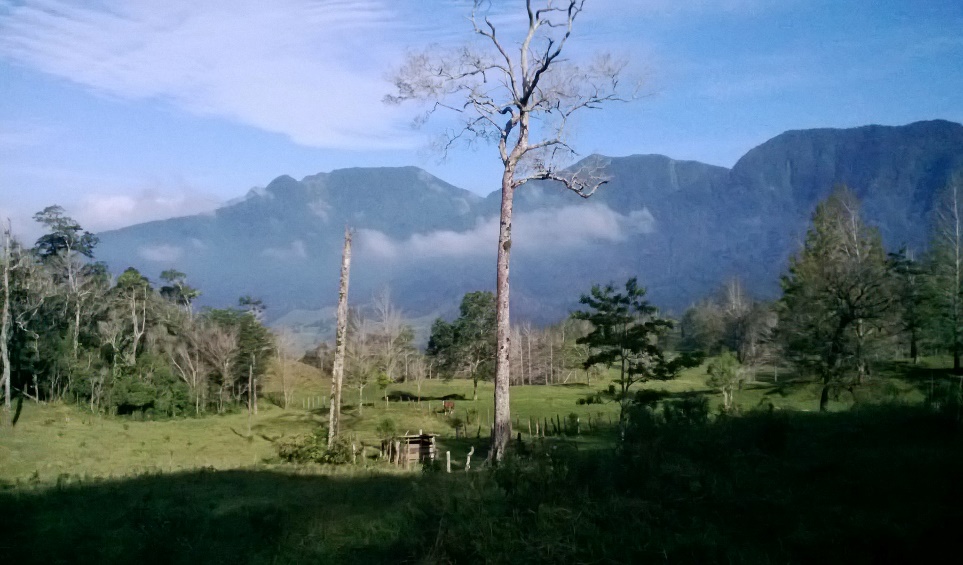Documentation of five Zoquean languages spoken in Mexico: Highland Popoluca

Landing page image for the collection “Documentation of five Zoquean languages spoken in Mexico: Highland Popoluca”. Click on image to access collection.
| Language | Highland Popoluca |
| Depositor | Roberto Zavala Maldonado and Wendy López Márquez |
| Affiliation | Centro de Investigaciones y Estudios Superiores en Antropología Social |
| Location | Mexico |
| Collection ID | 0494 |
| Grant ID | MDP0375 |
| Funding Body | ELDP |
| Collection Status | Collection online |
| Landing Page Handle | http://hdl.handle.net/2196/842815bf-b404-4e6c-830c-a4a9b291b13e |
Podcast
Showreel
Summary of the collection
Popoluca speakers still maintain some cultural practices that help document and preserve the language. For example, the Tiger Dance is performed as a ritual to bless the land, to ask Jomxuk —God of maize— for a good production of maize. With this dance, the four cardinal points of the compass are also asked, using Highland Popoluca, that people do not experience catastrophes and epidemics, that the population be in peace and balance. Thus, the stories of the speakers reflect their cultural knowledge. The recordings come from the municipality of San Pedro Soteapan and from three communities near the municipality: San Fernando, Santa Martha, and Planta Uno. In these recordings, they tell about the God of maize, but they also tell about the Thunder Men, the Chaneques, the Nahuales, and the Enchanted Creatures. Other interesting narratives that are documented in this project are past life memories, family stories, grandparents’ anecdotes, cultural activities, and cooking recipes.
Group represented
The group represented in this collection are the Popolucas, who call themselves “Nuntajɨyyajpaʔap” (Lit. people who speak the true language). In the past, Nahuatl speakers and Popoluca speakers had a reciprocal and prolonged language contact that enabled some to become bilingual, speaking both Popoluca and Nahuatl. At present, Popoluca speakers are involved in an intense contact situation with Spanish. The language of today is significantly different. Lexical items and morphological and syntactic structures have been borrowed from Nahuatl and Spanish.
Special characteristics
Nuntajɨɨyi is an agglutinative language with a polysynthetic character. The main feature that best describes it is its morphological complexity in the verb. Inflectional morphemes (person, number, aspect, and mood), derivational morphemes (passive, antipassive, reciprocal, reflexive, applicative, impersonal, and causative), lexical affixes, noun incorporation, as well as adverbial information and nuclear serialization are clustered in the verb. Nuntajɨɨyi also exhibits an ergative-absolutive alignment system with split ergativity in dependent clauses and presents a hierarchical marking system in transitive verbs, where first and second person arguments rank higher than third person arguments, following the saliency hierarchy: 1>2>3 (López 2018).
Collection contents
The corpus comprises a total of 12 hours of recordings of spontaneous speech that are presented in the form of narrations and dialogues. The collaborators have been men and women who are native speakers of Nuntajɨɨyi. The content of the recordings is varied and ranges from stories, anecdotes, recipes, incidents, etc. All the material in the collection has been transcribed and translated with ELAN (a computer software for the creation of complex annotations on video and audio resources). Two hours of the collection were glossed in FLEX (Fieldworks Language Explorer). Regarding the writing used for the transcription, an adaptation of the symbols of the IPA was made to a practical alphabet. The first symbols correspond to IPA and the second to the practical alphabet:
c-ty
ɟ-dy
ts-tz
ʧ-ch
ʃ-x
ɲ-ny
ŋ-nh.
The recordings can be browsed and accessed through the ELAR online catalogue.
Collection history
Some of the materials were collected in November 2016 and the other part in March 2018.
Acknowledgement and citation
Users or researchers who wish to consult and use the information in the collection must acknowledge Wendy Liz Arbey López Márquez and Roberto Zavala Maldonado. The Endangered Languages Documentation Programme (ELDP) as the funder of this project. Speakers whose words and photographs are used should also be recognized by their respective names. Any other collaborator who has collected, transcribed, and translated the data, or who has participated in some other way, must be recognized by name. All information about the participants of the materials is available in the metadata.
To refer to any data from the collection, please cite as follows:
López Márquez, Wendy L. A. & Roberto Zavala Maldonado. 2018. Documentation of five Zoquean Languages: Highland Popoluca. Endangered Languages Archive. Handle: http://hdl.handle.net/2196/00-0000-0000-0011-6C90-F. Accessed on [insert date here].


